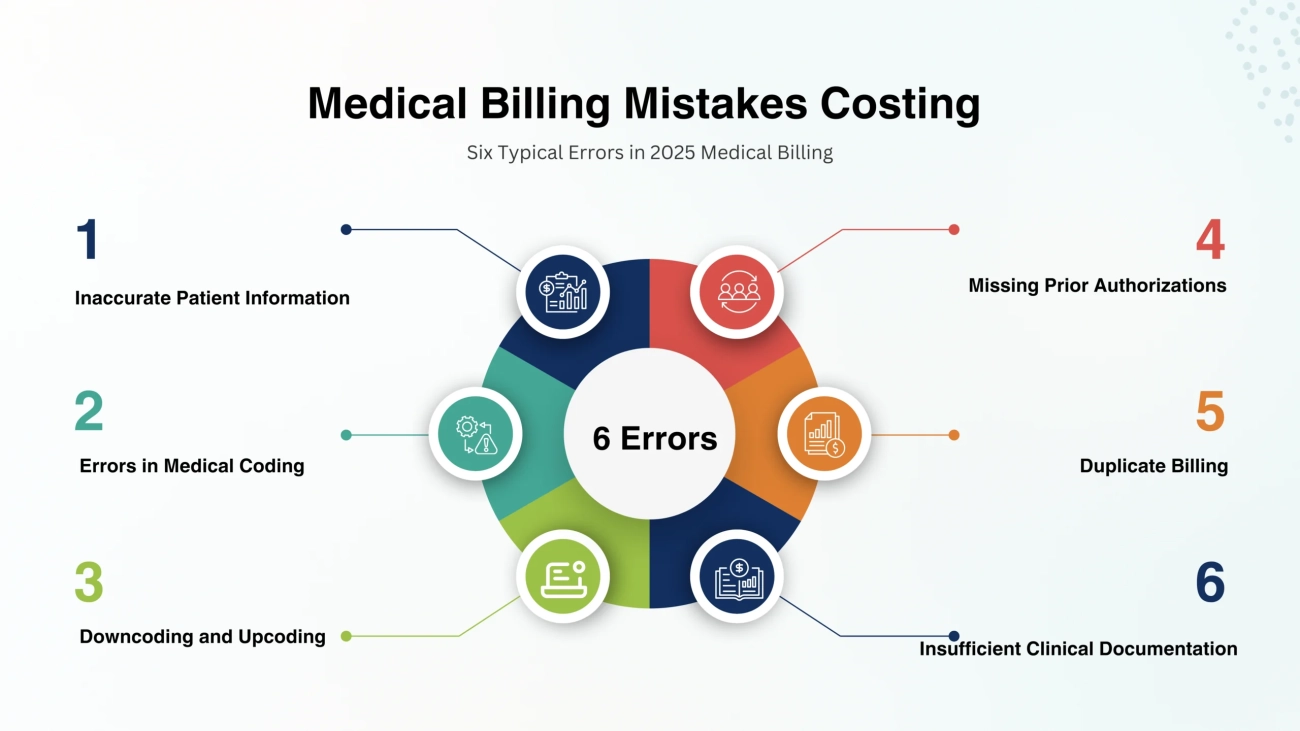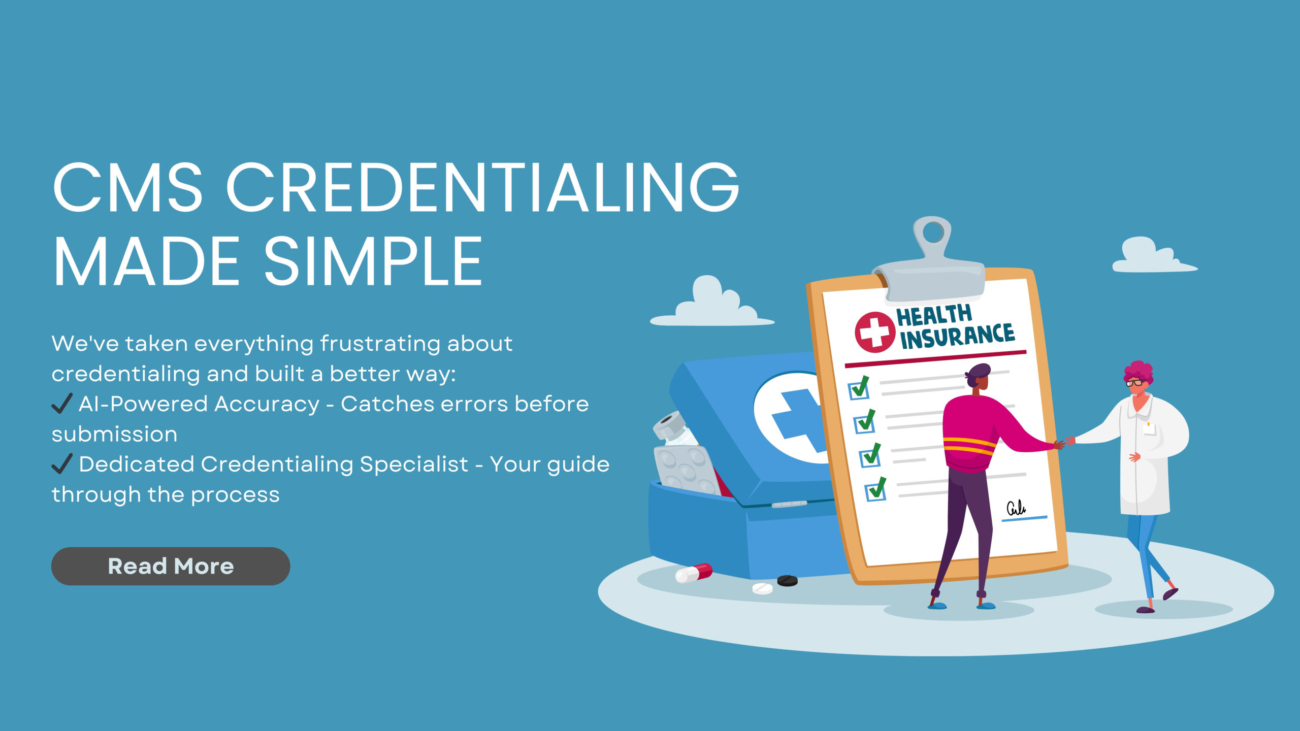In 2025, medical billing errors are projected to cost healthcare providers millions of dollars. These persistent errors continue to have a significant operational and financial impact on the American healthcare system. Alarmingly, up to 80% of medical claims still contain errors, costing the economy billions of dollars each year.
Such billing inaccuracies disrupt the revenue cycle, resulting in claim denials, delayed payments, and increased administrative inefficiencies. Beyond the financial loss, billing mistakes lead to higher administrative costs, damage to patient satisfaction scores, and erosion of patient trust.
Accurate billing is essential not just for profitability, but for regulatory compliance and delivering a smooth patient experience. This article explores the most common medical billing errors in 2025, their impact, and effective solutions to enhance revenue cycle accuracy.
The Significance of Medical Billing Errors
Medical billing errors have wide-ranging consequences across clinical, operational, and compliance areas:
-
Financial Impact: Poor billing practices result in an estimated $125 billion in annual losses for U.S. providers due to denied claims, underpayments, and administrative rework.
-
Compliance Risk: Coding errors like upcoding can trigger government audits, legal action, and reputational damage.
-
Patient Experience: Billing confusion, surprise charges, and delays in care significantly undermine patient satisfaction.
Six Common Medical Billing Errors in 2025
1. Inaccurate Patient Information
Simple errors like misspelled names, incorrect insurance IDs, or failure to coordinate benefits often lead to claim denials. Registration and eligibility mistakes account for nearly half of all denials.
2. Errors in Medical Coding
Mistakes in CPT®, HCPCS Level II, or ICD-10-CM codes result in underpayments or denials. Common issues include:
-
Outdated codes
-
Incorrect modifiers
-
Mismatched procedure and diagnosis codes
3. Downcoding and Upcoding
-
Upcoding involves billing for services that are more complex than those actually provided and can lead to fraud penalties.
-
Downcoding underreports services, resulting in lost revenue.
4. Missing Prior Authorizations
Claims are frequently rejected if pre-approval is not secured for services like imaging, surgery, or specialty care.
5. Duplicate Billing
Submitting multiple claims for the same service can lead to delays, audits, and payer confusion.
6. Insufficient Clinical Documentation
Claims are often denied due to:
-
Incomplete provider notes
-
Missing provider signatures
-
Lack of documented medical necessity
Implications of Inaccurate Billing
-
Higher Administrative Expenses: Reworking a single rejected claim costs over $25.
-
Cash Flow Disruptions: 77% of providers report reimbursement delays exceeding 30 days.
-
Patient Frustration: 87% of patients cite surprise medical bills as a major concern.
-
Legal & Regulatory Risks: Billing errors can prompt audits and penalties, affecting the provider’s reputation.
-
Staff Burnout: Teams spend valuable time fixing errors instead of focusing on patient care.
Five Strategies to Prevent Medical Billing Errors
1. Continuous Staff Training
Regular training on payer requirements, CPT® updates, and ICD-10-CM ensures compliance and improves billing accuracy.
2. Revenue Cycle Automation
Implement automated coding tools, EHR-integrated billing systems, and AI-powered claim scrubbers to minimize manual errors.
3. Real-Time Insurance Verification
Verify insurance eligibility before every patient visit to prevent avoidable denials.
4. Internal Audits and KPI Monitoring
Track coding accuracy, denial patterns, and compliance metrics through routine audits and performance monitoring.
5. Partnering with RCM Experts
Outsourcing to a HIPAA-compliant RCM provider enhances accuracy, ensures faster reimbursements, and reduces regulatory risk.
Why Choose XyberMed AI for Medical Billing?
At XyberMed AI, we provide intelligent, AI-powered medical billing solutions to help healthcare providers reduce errors and optimize their revenue cycle.
✔ Increase clean claim rates for faster reimbursements
✔ Minimize billing mistakes through automated verification and auditing
✔ Ensure full compliance with CMS and private payer regulations
✔ Improve cash flow and reduce administrative workload
Our advanced billing technology ensures accuracy, speed, and regulatory compliance, helping providers focus more on patient care and less on paperwork.




